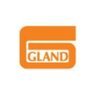Ipqa Chemist
10+ Ipqa Chemist Interview Questions and Answers

Asked in Gland Pharma

Q. What is line clearance. Define contamination and cross contamination. Define autoclave priciple and temperature. Define calibration and validation. What is data integrity. What is clean rooms.
Line clearance, contamination, cross contamination, autoclave principle and temperature, calibration and validation, data integrity, and clean rooms are important concepts in pharmaceutical manufacturing.
Line clearance is the process of ensuring that equipment and work areas are free of any materials from previous operations.
Contamination is the presence of any harmful substance in a product or environment.
Cross contamination is the transfer of harmful substances from one pro...read more

Asked in Softech Pharma

Q. Intro. Chemistry means what is valancy of carban defferent between organic inorganic
Valency of carbon differs in organic and inorganic compounds due to the presence of functional groups.
Organic compounds contain carbon-carbon and carbon-hydrogen bonds with a valency of 4.
Inorganic compounds may have different valencies for carbon depending on the functional group present.
For example, carbon in carbon dioxide has a valency of 4, while in methane it has a valency of 2.
Valency is important in determining the reactivity and properties of compounds.

Asked in Gland Pharma

Q. Tell me about in-process control.
In process control is a system of checks and measures to ensure quality and consistency during the manufacturing process.
In process control involves monitoring and adjusting variables such as temperature, pressure, and pH levels to maintain quality standards.
It includes sampling and testing of raw materials, intermediates, and finished products to ensure they meet specifications.
Examples of in process control techniques include statistical process control, process capability ...read more

Asked in Bajaj Healthcare

Q. What is the weight variation criteria as per IP & USP?
Weight variation criteria as per IP & USP
Weight variation criteria for tablets as per IP is not more than 7.5% of the average weight
Weight variation criteria for capsules as per USP is not more than 10% of the average weight
Weight variation criteria may vary for different dosage forms and pharmacopoeias

Asked in Gland Pharma

Q. What is line clearance?
Line clearance is a process of ensuring that equipment and work areas are free from any previous product or material before starting a new process.
It involves a visual inspection of the equipment and work area to ensure cleanliness and absence of any residual material.
It is important to prevent cross-contamination and ensure product quality.
Examples include cleaning of manufacturing equipment, changeover of packaging materials, and transfer of materials between different area...read more

Asked in Unichem Laboratories

Q. What is quality assurance?
Quality assurance is a process that ensures products or services meet specified requirements and standards.
Quality assurance involves establishing processes to prevent defects and errors in products or services
It focuses on continuous improvement and monitoring of processes to ensure consistency and quality
Examples include conducting audits, inspections, and testing to verify compliance with standards
Ipqa Chemist Jobs


Asked in Gland Pharma

Q. What are regulatory bodies?
Regulatory bodies are organizations that enforce laws and regulations to ensure compliance and safety in various industries.
Regulatory bodies set standards and guidelines for companies to follow
They monitor and inspect businesses to ensure compliance with regulations
Examples include FDA in the pharmaceutical industry and EPA in the environmental sector

Asked in Gland Pharma

Q. What is the role of patents in the biopharmaceutical industry?
Patents play a crucial role in protecting the intellectual property of biopharmaceutical companies.
Patents provide legal protection for the unique processes, methods, and products developed by biopharmaceutical companies.
They allow companies to recoup their investment in research and development by preventing competitors from copying their innovations.
Patents also encourage innovation by providing an incentive for companies to invest in research and development.
Without patent...read more
Share interview questions and help millions of jobseekers 🌟


Asked in Bharat Biotech International

Q. What is sterilization?
Sterilization is the process of killing all microorganisms, including bacteria, viruses, fungi, and spores, to prevent contamination.
Sterilization can be achieved through various methods such as heat, chemicals, radiation, and filtration.
Common examples of sterilization methods include autoclaving, ethylene oxide gas sterilization, and UV light sterilization.
Sterilization is crucial in medical settings to prevent the spread of infections and ensure patient safety.

Asked in Bajaj Healthcare

Q. Line clearance in compression area
Line clearance in compression area is essential to prevent cross-contamination and ensure product quality.
Line clearance involves removing any previous product residues, cleaning equipment, and verifying cleanliness before starting a new batch.
It helps prevent mix-ups, contamination, and errors during production.
Examples of line clearance activities include visual inspection, swab testing, and documentation of cleaning procedures.
Proper training and adherence to standard oper...read more

Asked in Regency Health Care

Q. How do you calculate average weight according to IP, BP, and USP standards?
Average weight is crucial in pharmaceutical formulations, defined by IP, BP, and USP standards.
Average weight is the mean weight of a specific quantity of a substance.
IP (Indian Pharmacopoeia) defines average weight for various drugs and formulations.
BP (British Pharmacopoeia) provides guidelines on average weight for medicinal products.
USP (United States Pharmacopeia) specifies average weight in relation to dosage forms.
Example: For tablets, average weight ensures uniformity...read more

Asked in Wings Biotech

Q. What is your understanding of GMP?
Good Manufacturing Practices (GMP) are guidelines and regulations set by regulatory agencies to ensure the quality and safety of pharmaceutical products.
GMP ensures that pharmaceutical products are consistently produced and controlled according to quality standards.
It includes guidelines for manufacturing processes, facilities, equipment, personnel, documentation, and more.
Adherence to GMP helps prevent contamination, mix-ups, and errors in production.
Examples of GMP requirem...read more

Asked in Wings Biotech

Q. What is your experience with tablets?
My tablet is a pharmaceutical dosage form that contains active ingredients and excipients compressed into a solid form.
Tablets are one of the most common dosage forms used in pharmaceuticals.
They can be made using different methods such as direct compression, wet granulation, or dry granulation.
Tablets can be coated for various reasons such as taste masking, extended release, or protection of the active ingredient.
Examples of tablets include ibuprofen tablets, vitamin C table...read more

Asked in Zydus Lifesciences

Q. Types of Titration
Titration is a technique used in chemistry to determine the concentration of a substance in a solution.
Acid-base titration: involves the reaction between an acid and a base to determine the concentration of either
Redox titration: involves the transfer of electrons between reactants to determine the concentration of a substance
Complexometric titration: involves the formation of a complex between a metal ion and a ligand to determine the concentration of the metal ion
Precipitat...read more
Interview Questions of Similar Designations
Interview Experiences of Popular Companies








Reviews
Interviews
Salaries
Users

















